Notes from a Morning at Hoshino Coffee
Slow down with a luxurious cup of fresh, hand-dripped coffee
The daughter speaks first, her voice lowered to the register people use inside museums. She’s in her fifties; her mother might be anywhere between eighty-five and a hundred. They discuss cardiology check-ups and medication dosages in hushed tones. From somewhere, a single muted saxophone solo drifts through the air. The barista moves unhurriedly, pouring hot water over fresh grounds.
I always aim to order before eleven, when the morning set is still available. For ¥550, I get a porcelain cup of hand-dripped house blend which is nutty, sweet, and gentle. The coffee comes with a gift: half a slab of toast as thick as today’s book, Writers and Coffee, an anthology of Japanese essays on the drink. In one piece, Shigeru Mizuki, known for his yokai manga like GeGeGe no Kitaro, calls coffee a luxury he enjoyed when he could afford it, adding that a cup brewed at home “tastes different.”
Hoshino Coffee began in 2011 as an effort to capture Showa-era kissaten aesthetics for modern life. An independent kissaten would have been ideal, but none lay on my route, so I stepped into a branch of the chain instead. As of writing, the chain has over 250 branches in Japan, with outposts in Singapore, Taipei, Bangkok, and elsewhere.
While my toast cools, I watch the barista perform the house ritual. He spoons freshly ground beans into a cotton filter and begins a slow spiral of water just off the boil. The grounds rise and breathe like bread dough. Hoshino roasts over direct fire, an old-fashioned method that gives its three core blends distinct personalities. I’m partial to the signature Hoshino Blend.
If I arrive after a run or am planning a long walk, I order a second coffee and additional toast, or on reward days, surrender to the soufflé pancake, which is two fingers tall, or the French toast drizzled with maple syrup. Like Komeda, and unlike Starbucks or Doutor, Hoshino offers full table service: servers in crisp jackets glide between mahogany panels.

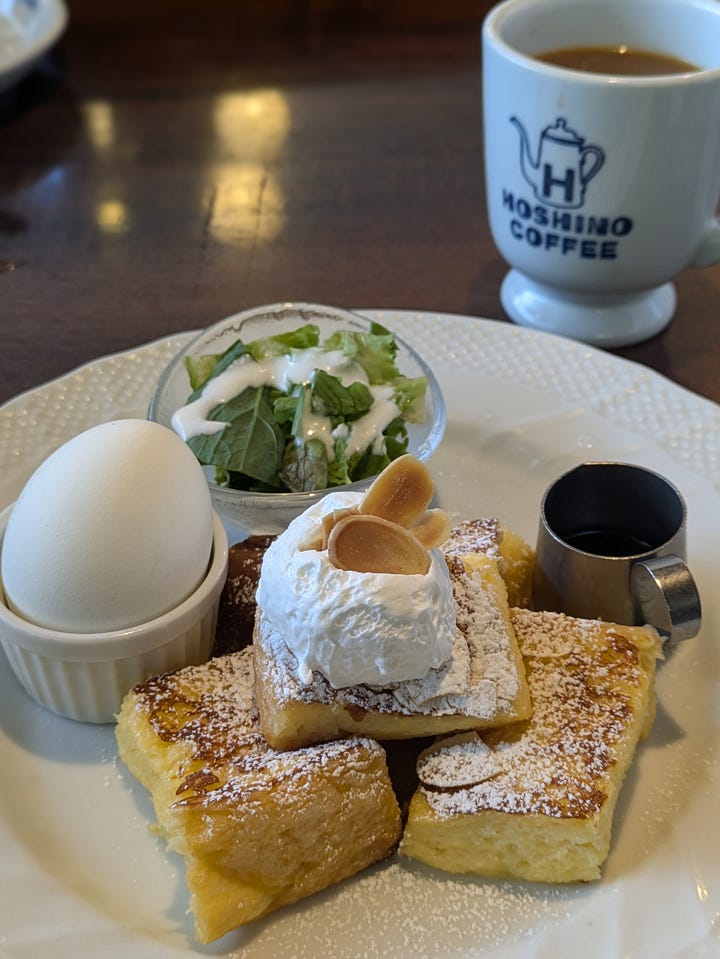
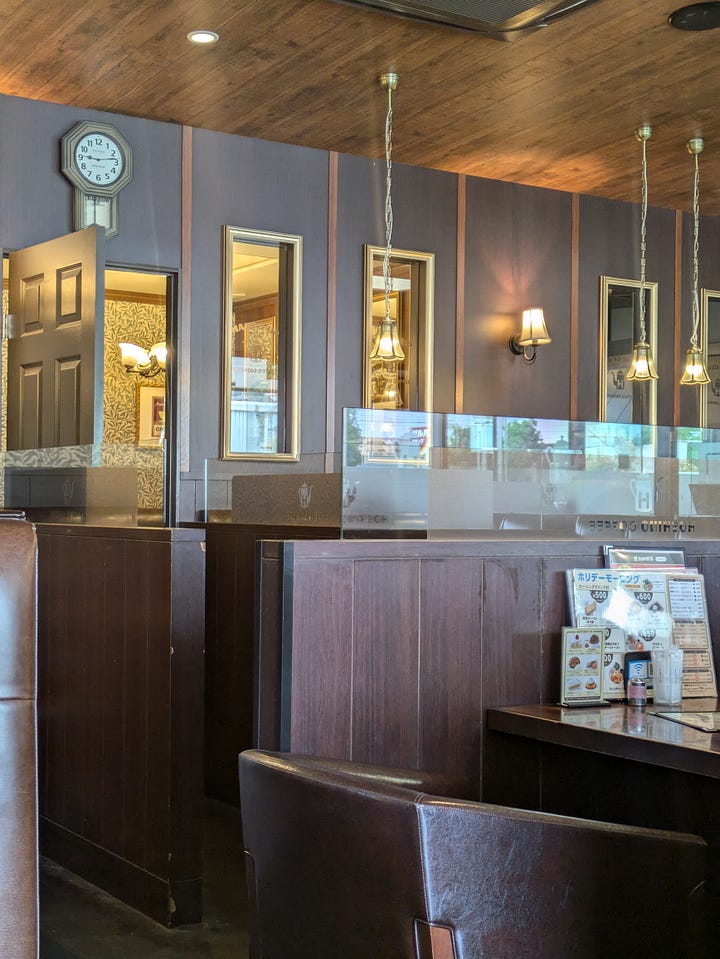

In the table next to mine, the daughter rises, steadying her mother by the elbow. In their wake, the silence resettles, and the barista begins another slow pour. I look at my cooling cup and think of Mizuki’s distinction between cafés and kitchens. At home, a mug of coffee can feel utilitarian, brewed between chores; here, it is ceremonious. It’s one of the reasons for my trip. The coffee creates a singular focus in my mind, and the breakfast fills me with joy. It’s a pretty neat combination conducive to creativity. Perhaps this is what Shigeru Mizuki prized: a space where an everyday cup of coffee feels like a small luxury.
Some tips:
Aim to visit Hoshino Coffee in the morning before 11 a.m. to enjoy their morning set
If you're a coffee enthusiast, try the Hoshino Blend (I may be biased)
Find a local branch via their store finder or on maps. They have branches in most major cities and towns.
https://www.hoshinocoffee.com/shop.html
As far as I know, they don’t have flat whites, and other espresso machine based drinks, but drinks based on drip coffee. It could be just in the branches I have been to though. Either way, drip coffee is worth trying and what Hoshino does best IMO.
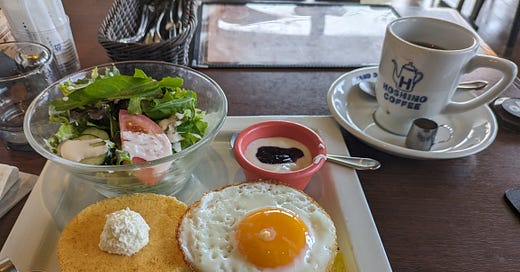


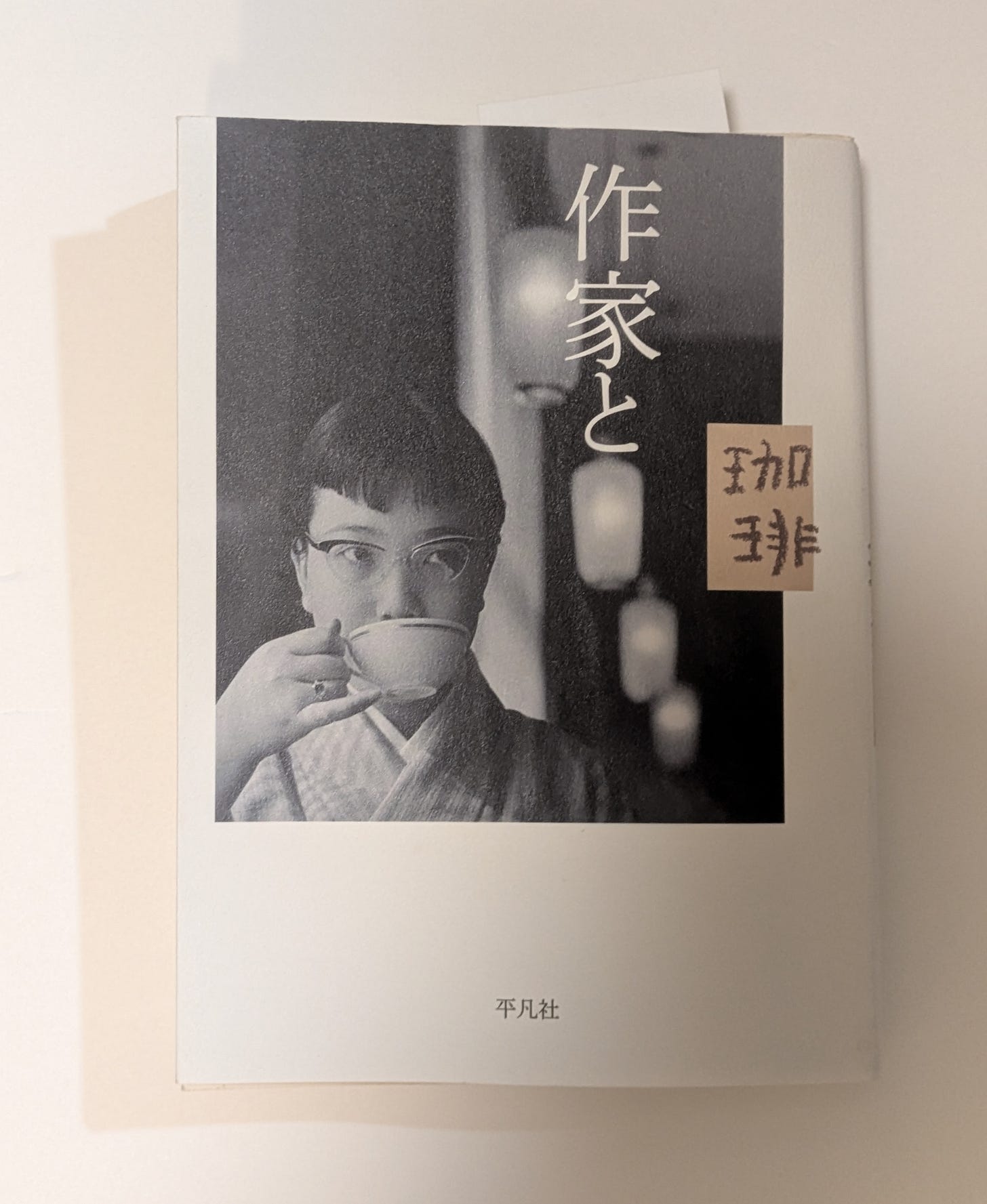
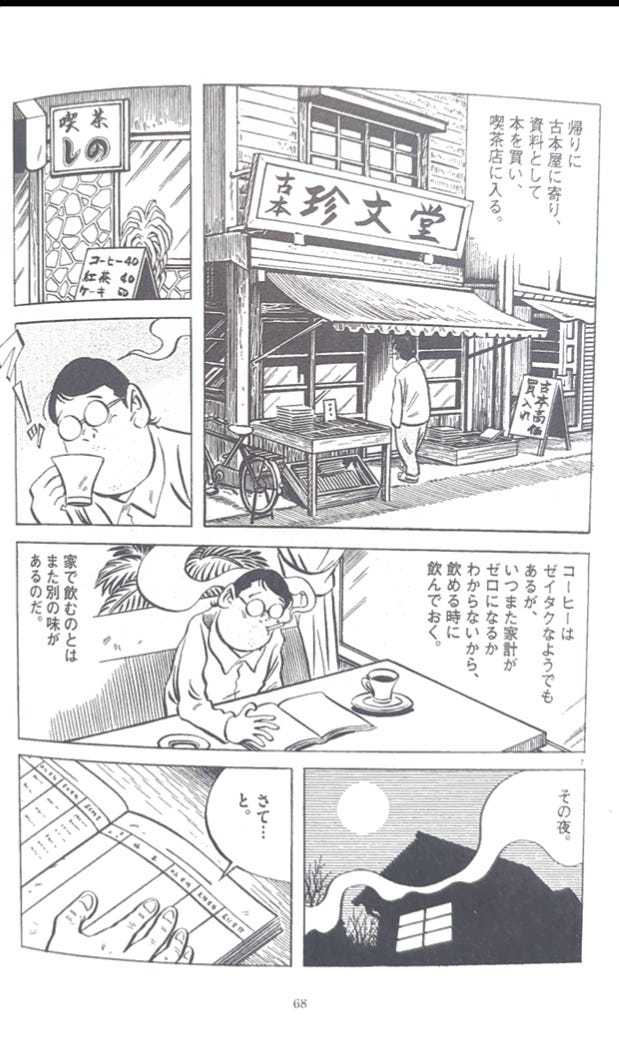

This is beautiful. Thank you so much for sharing. A good friend and I have started visiting coffee shops in the mornings for deep work time. A few hours of writing, making music or thinking. No phones (oops, sometimes they creep in) and no shallow work like emails and the like. Always enjoying the morning set with it's darkly roasted coffee. It's such a nice ritual!
I didn’t realize that they were so recent